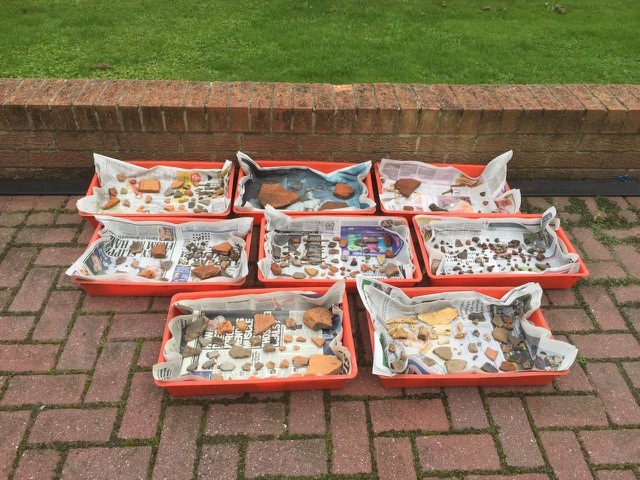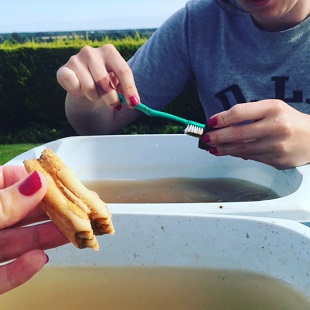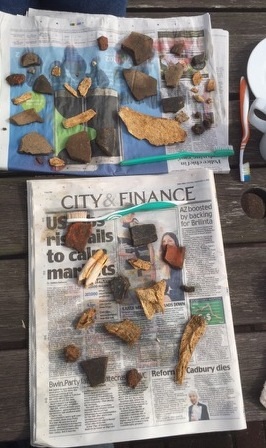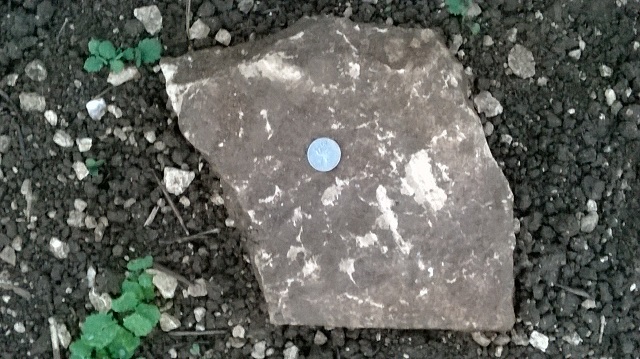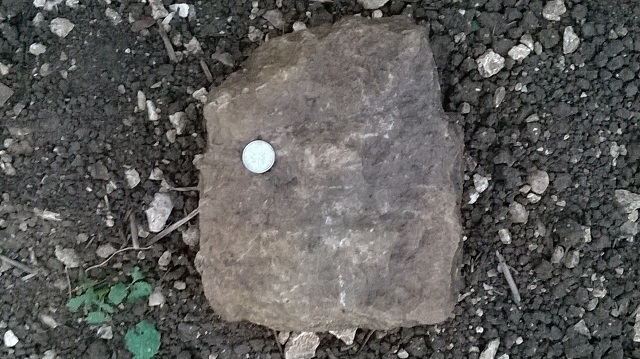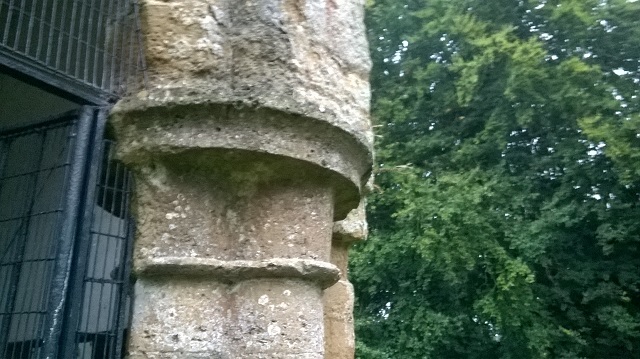We have been working on the finds and studying the building materials used, as the excavation progresses.
Antonia writes: “Today Danielle and I were tasked with the opportunity to wash and clean some of the finds from the two trenches at our Binbrook site. In particular we were dealing with the bags of finds from the ploughsoil above our trenches and from the trowelling clean of the trench surfaces as we defined the layers below. Of course, coming from the field they are covered with an amount of soil; the finds need cleaning to ensure identification and as we will be keeping these artefacts for further detailed study as we prepare the publication of our work. The finds bags included a range of types of items, such as animal bones, tile fragments, sherds of pottery, glass and teeth. The process of cleaning is easy and straightforward, but follows a system with some differences depending on the material to clean. We found that knowing the system to follow allowed us to get through a variety of finds in what felt like a short space of time for the amount of finds in the bags.
We started out with two washing-up bowls of warm water ready to place the majority of the finds as this loosens any soil stuck to their surfaces. We then proceeded gently to shrub them with toothbrushes.
The amount of vigour needed depended on the item being cleaned: tile and pot sherds need a firm shrub as soil adheres strongly to these items. Thereby the previously hidden surfaces are revealed. It is surprising what such a simple clean can show: details of decoration on pottery and finger and hand marks on Roman tiles left by the original manufacturers of the roof tiles of our site. As we have been careful on site to ensure that finds from particular layers go into the right finds bag so too we were careful with this process of cleaning to ensure that the correct finds bag stayed with the finds it contained. Steve said the typical next stage after pottery and bone is dry is to mark it with Indian ink with its site code and context (layer) number so it will always be clear where it came from.
Once the finds are washed and dried it is clearer to see what they actually are. (Fragments of Red Chalk and reddened ironstone at the Binbrook site can often appear to be tile fragments unless you wash them). We did not wash and scrub the oyster shells as if you did so you might loose important information from their surface layers that can easily flake off, so these we just dipped in the water to remove excess soil. Iron and glass we kept dry and these finds will be bagged separately. Although these finds were from upper site layers, when clean we could see the great majority were Roman in date: Roman kitchen greyware pot sherds from jars and finer table ware beakers made in the Peterborough area (called Nene valley ware). There was a hobnail from Trench C from Roman footwear; we will look out for more of these.
One aim in studying the finds will be to see how the items from the two trenches compare given that they are from two different locations at our ancient site. Examining the finds will prove a great learning experience”.
Antonia M. and Danielle G.
The Dig Team write: From our fieldwalking at the Binbrook site and the hedgerow survey conducted by David Robinson, Brian and other Society members we knew there to be a great deal of stone brought to the site. This is presumably building stone related to the Roman site and fits in with a pattern that is emerging for the types of stone and stone industries in the area in the Roman period. The column drums found at the start of this season are of Claxby Ironstone. This rock, extracted from exposure points on The Wolds scarp to the west has been a commonly used material in vernacular architecture in the area in recent centuries, though as is often found to be the case we can say ‘the Romans did it first’! The church of St Helen at Swinhope is quite near our site and dates from the thirteenth century; built largely of Claxby Ironstone its walls show how this stone can weather and deteriorate. Often it seen left as an undressed building stone in local houses but this church, for example, shows it can be finished well for door and window surrounds etc. Much of the stone at our site is the Claxby Ironstone. Present too are Tealby Limestone and Roach. These are similar rock types which themselves are not homogenous so expert geological/petrological study is always likely to be beneficial; washing also helps! Some 55 years ago Prof Rhatz found that Tealby Limestone and Roach had been used in the construction of the late Roman enclosure wall at Caistor to the north west of our site in the only significant excavation to examine this walling. Study for our publication on the Roman Roadside settlement at nearby Nettleton/Rothwell showed all three of these rock types being quarried and employed as building stone. Roach was used for the more visible architectural elements there, for when dressed its surfaces are less prone to weathering than with the ironstone.

